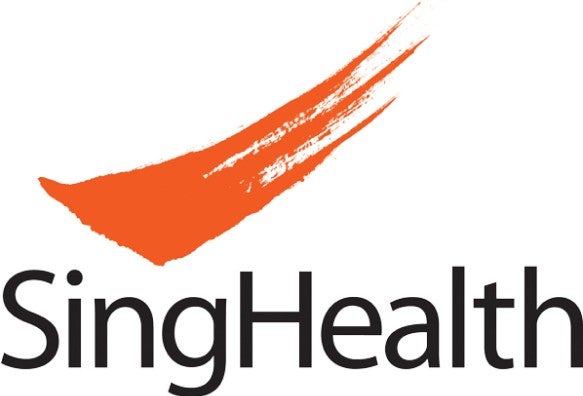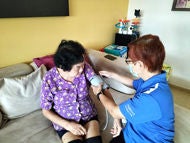What is - Thrombocytosis
What is thrombocytosis?
Thrombocytosis or thrombocythemia is a condition where you have a higher-than-normal level of platelets in your blood. Platelets are small disc-shaped cell fragments which are vital for blood clotting and healing processes.

When there is damage to a blood vessel, such as when you cut yourself, platelets come together and stick to each other, forming a clot. This clot helps to stop bleeding by sealing the damaged area.
What are the types and causes of thrombocytosis?
- Primary thrombocytosis or essential thrombocythemia is a rare blood disorder when the bone marrow produces more platelets than normal. It is often due to changes (mutations) in the genes that control platelet production. These genes include JAK2, CALR and MPL. Essential thrombocytosis is estimated to affect one to 24 individuals per one million worldwide.
- Secondary or reactive thrombocytosis is a more common cause of elevated platelets. The body produces more platelets in response to various conditions, which include:
- Iron deficiency, with or without anaemia
- Infection
- Recent surgery or trauma
- Inflammatory diseases such as rheumatoid arthritis or inflammatory bowel disease
- Certain cancers
- Removal of the spleen
Symptoms of Thrombocytosis
What are the symptoms of thrombocytosis?
Reactive thrombocytosis does not directly cause symptoms. If there are symptoms, they are because of the underlying conditions.
For patients with essential thrombocytosis, the symptoms are often because of abnormal blood clot and rarely, bleeding. These symptoms include:
- Headaches
- Leg swelling
- Shortness of breath
- Chest discomfort
- Easy bruising
- Unusual bleeding from nose, mouth or gums
- Tiredness
Some patients with essential thrombocytosis may also experience erythromelalgia, a condition that causes painful red palms.
Diagnosis of Thrombocytosis
How is thrombocytosis diagnosed?
Medical history
Your doctor will ask you about past medical experience (such as surgeries or infections), the medicines you take and if anyone in your family has had high platelet counts. The goal is to determine if the elevated platelet count is the primary issue or a reaction to something else.
Physical examination
During a physical checkup, the doctor looks for signs of abnormal bleeding, blood clots or any conditions causing the increased platelet count such as infections. This part of the process helps guide further investigations.
Blood tests
Platelet levels are measured through a full blood count (FBC) test. In a typical FBC, the normal platelet range is approximately 150,000 to 450,000 platelets per microliter of blood.
- Mild thrombocytosis: Platelet count between 450,000 and 600,000 platelets per microliter.
- Moderate thrombocytosis: Platelet count between 600,000 and 1 million platelets per microliter.
- Severe thrombocytosis: Platelet count exceeding 1 million platelets per microliter.
A repeat FBC is typically performed to see if the level has normalised. If it remains elevated, further tests, as indicated below, may be arranged.
- Coagulation test: Evaluates the efficiency of blood clotting
- ESR evaluation: Assesses levels of inflammation
- Tests for ferritin and iron levels: Examines iron storage
- Tests for CRP levels: Checks for markers of inflammation.
- Peripheral blood smear: To identify signs of infection or inflammation at a cellular level
Bone marrow aspiration and biopsy
This diagnostic method uses a needle to take a sample of fluid bone marrow and right after, a small piece of bone marrow tissue. These samples are then looked at under a microscope to find any irregularities, like an increased number of large cells that make platelets.
In cases of primary thrombocytosis, there might be an abnormal increase in the cells that give rise to platelets within the bone marrow. This is the gold standard procedure for diagnosing primary thrombocytosis.
Gene studies
Three primary mutations are commonly analysed in essential thrombocythemia:
- JAK2 V617F
- CALR
- MPL
Treatment for Thrombocytosis
How is thrombocytosis treated?
Primary thrombocytosis (essential thrombocythemia)
Treatment for primary thrombocytosis focuses on managing the elevated platelet count to reduce the risk of complications such as blood clots or bleeding. Common treatments include:
- Medications: Drugs like hydroxyurea or anagrelide may be prescribed to reduce platelet production. In some cases, aspirin may be recommended to reduce the risk of clotting.
- Plateletpheresis: In severe cases, a procedure called plateletpheresis is used to remove excess platelets from the blood temporarily.
- Monitoring: Regular monitoring of blood counts is essential to adjust treatment as needed.
Secondary thrombocytosis (reactive thrombocytosis)
Treatment for secondary thrombocytosis involves addressing the underlying condition causing the elevated platelet levels. Depending on the cause, treatment may include:
- Treating the underlying condition: Managing infections, reducing inflammation, or treating iron deficiency or addressing cancer where applicable, can bring platelet levels back to normal.
- Monitoring: Once the underlying cause is addressed, regular monitoring of platelet levels helps ensure they return to and stay within a normal range.
Additional recommendations
- Regular check-ups: Regularly visit your doctor to monitor your platelet levels and overall health.
- Hydration: Maintaining adequate hydration is recommended, as it can help prevent blood clot formation.
- Lifestyle changes: Avoid smoking and alcohol consumption, as they can increase the risk of clot formation.
- Medication adherence: If you have been prescribed medications to manage thrombocytosis, take them as directed by your doctor.
FAQs on Thrombocytosis
Thrombocytosis is the opposite of thrombocytopenia. Thrombocytosis involves an elevated platelet count, while thrombocytopenia refers to a low platelet count. Both conditions have distinct causes, symptoms, and treatments.
The severity of thrombocytosis varies. It is often a secondary response to another condition and may not be a severe problem. However, if the underlying cause is a serious illness that is left untreated, it can lead to complications.
Proper management allows many individuals with primary thrombocytosis to sustain a high quality of life. Lifestyle modifications, maintaining a healthy diet, staying physically active and avoiding smoking and alcohol can contribute to overall well-being.
References
Accurso, V., Santoro, M., Mancuso, S., Napolitano, M., Carlisi, M., Mattana, M., Russo, C., Di Stefano, A., Sirocchi, D., & Siragusa, S. (2020). The Essential Thrombocythemia in 2020: What We Know and Where We Still Have to Dig Deep. Clinical Medicine Insights: Blood Disorders, 13, 263485352097821. https://doi.org/10.1177/2634853520978210
Rokkam, V. R., Killeen, R. B., & Kotagiri, R. (2023). Secondary Thrombocytosis. In StatPearls. StatPearls Publishing. http://www.ncbi.nlm.nih.gov/books/NBK560810/
Kam, G., Yiu, R., Ang, A. L., Loh, Y. S., Linn, Y. C., Lee, L. H., Goh, Y. T., & Wong, G. C. (2012). Essential Thrombocythaemia in Young Adults: Clinical Characteristics and Outcomes – a Single Center Experience. Blood, 120(21), 5060. https://doi.org/10.1182/blood.V120.21.5060.5060
Contributed by
The information provided is not intended as medical advice. Terms of use. Information provided by SingHealth.





















